Lower back pain is a common complaint that affects millions of people worldwide. It is estimated that up to 80% of adults will experience at least one episode of back pain in their lifetime.
Lower back discomfort can range from mild, short-term aches to chronic, long-term pain that can significantly lower quality of life.
While there are many potential causes of back pain, one of the most common is weak or imbalanced muscles.
When the muscles surrounding the spine are not properly engaged, it can lead to strain and pain.
Fortunately, lower back stabilization exercises may help reduce and manage lower back pain. Stationary quadruped positions are particularly effective for lower back stabilization as they target the core muscles, providing strength and stability to the lower spine.
What lower back stabilization exercises can be done that may help reduce lower back pain?🤔
Many lower back stabilization exercises can be beneficial for lower back pain.
Individuals can improve their overall postural alignment by engaging key muscles through specific movements and stretches while reducing tension in the lower lumbar region.
Stationary quadruped is an excellent lower back stabilization exercise for back pain relief. This exercise helps to strengthen your core and lower back muscles while also providing stability to the spine. It focuses on proper form and technique to maximize results.
🧐So, what lower back stabilization exercises can be done that may help reduce lower back pain?
Lower back stabilization exercises that may help reduce lower back pain include core strengthening exercises, postural alignment activities, stretching and breathing techniques, and stationary quadruped positions. These lower back stabilization exercises can be tailored to an individual’s specific needs and level of lower back pain to maximize effectiveness and provide relief from discomfort.
👊The Importance of Lower Back Stabilization Exercises
Lower back stabilization exercises are essential for those suffering from lower back pain. These exercises can help provide lower back support, reduce inflammation and discomfort, and improve posture. In addition, by targeting lower back and core muscles, lower back stabilization exercises can help stabilize the spine and create a strong foundation for other lower body movements, such as squats and lunges.
✅Provide lower back support
Lower back stabilization exercises can help provide lower back support by strengthening lower back muscles, which helps with spinal stabilization. In addition, lower back support is essential for lower back pain relief as it decreases tension in the lower lumbar region.
✅Reduce inflammation and discomfort
Lower back stabilization exercises can help reduce lower back pain by decreasing lower back inflammation. This is due to the fact that lower back stabilization exercises target the lower lumbar region, which is often a source of lower back pain. Therefore, individuals can decrease lower back inflammation and discomfort by strengthening this area with lower back stabilization exercises.
✅Improve posture
Lower back stabilization exercises can help improve posture by strengthening lower back muscles and engaging core muscles, which helps to keep the spine aligned while standing or sitting. In addition, this improved posture can reduce lower back pain as it reduces strain on lower lumbar region muscles, often a source of lower back pain.
🔥How to Do a Basic Lower Back Stabilization Exercise
Lower-back stabilization exercises can help stabilize the spine and create a strong foundation for other lower-body movements by targeting the lower back and core muscles.
⚡️Start in a quadruped position
One of the basic lower back stabilization exercises is the quadruped position. This exercise involves getting on your hands and knees with your knees directly below your hips and your hands slightly wider than shoulder-width apart on the floor in front of you. Keep your head neutral with eyes looking down at the floor while keeping a flat lower back throughout this exercise.
⚡️Take a deep breath
Once in this position, take a deep breath as you tighten your core muscles while also engaging the glutes (buttock) muscles and quads (thighs). Hold this contraction for 10 seconds before slowly releasing it over 5 seconds while exhaling deeply during that period.
⚡️Repeat the process
Repeat this process 8-10 times depending on how comfortable you feel; if needed, start with fewer repetitions until you build up strength to do more reps per set comfortably without strain.
✨Benefits of Lower back stabilization exercises
There are many benefits to lowering back stabilization exercises. These include lower back pain relief, improved lower back support and core strength, improved posture, and reduced lower back inflammation. Additionally, lower back stabilization exercises can help improve balance and coordination and reduce the risk of lower back injuries.
☑️Lower back pain relief
Lower back stabilization exercises effectively relieve lower back pain because they strengthen lower back muscles and engage the core, which helps support the lower lumbar region. This improved lower back support can reduce tension in the lower lumbar region, often a source of lower back pain.
☑️Improved lower back support and core strength
Lower back stabilization exercises can help improve support and core strength by targeting the lower back and core muscles. When lower back muscles are strengthened, they help to provide lower back support and create a strong foundation for other lower body movements, such as squats and lunges. Core muscles are also engaged during lower back stabilization exercises, which help improve lower back stability, which can help reduce lower back pain.
☑️Improved posture
Lower back stabilization exercises help to improve posture by strengthening lower back muscles and engaging core muscles. This improved posture can reduce lower back strain and, thus, lower back pain. Additionally, improved posture can make other activities, such as sitting or standing, more comfortable.
☑️Reduced lower back inflammation and discomfort
Lower back stabilization exercises can help reduce lower back inflammation by targeting the lower back and core muscles. When lower back muscles are strengthened, they help to provide lower back support and create a strong foundation for other lower body movements, which helps to reduce strain on the lower lumbar region. This, in turn, can help reduce lower back inflammation and discomfort.
🎯The Basic of Stationary Quadruped and How to Do It?
Stationary quaruped exercises are one of the basic lower back stabilization exercises that you can do. This exercise helps to strengthen the lower back muscles, along with engaging your glutes for stability and balance.
Stationary quadruped exercises involve the use of the four limbs (hands and feet) to move with your spine stationary. This exercise is designed to target the core muscles and build overall strength.
Begin in a stationary position on all fours, with your feet and hands firmly planted on the ground. Keep your spine straight and stationary as you use your arms and legs to move forward or backward. This will engage your core muscles and those in the arms, giving you a full-body workout.
When doing stationary quadruped exercises, make sure that your posture is correct. Keep your back straight, and your core engaged throughout the training.
Please pay attention to the form when doing stationary quadruped exercises, as this will help you get the most out of it.
✊Start Position:
Begin in a stationary position on all fours, with your feet and hands firmly planted on the ground. Keep your spine straight and stationary.
✊Movement Phase:
Use your arms and legs to move forward or backward while keeping the spine stationary. Focus on engaging your core muscles and those in the arms.
✊End Position:
End the stationary quadruped exercise by returning to a stationary position on all fours, with your feet and hands firmly planted on the ground. Keep your spine straight and stationary.
Here are the 3 phases of the stationary quadruped challenge that will help you get the most out of your stationary quadruped exercise.
🤜Tap Elbows
After positioning yourself (on all fours, with feet and hands firmly planted on the ground), begin with a simple stationary quadruped exercise known as “tap elbows.” This is done by tapping the elbow on one side of your body to the opposite knee and then back again in a slow, controlled motion.
🤜Lifting
The next step is the stationary quadruped lift, which involves starting in the same position as the tap elbows exercise and then lifting your arm straight in front of you, alternating your arms as you lift. This stationary quadruped exercise targets the muscles in your shoulders, chest, and arms. Furthermore, lifting your arms during stationary quadruped exercises will also engage your core muscles for added support.
🤜Bird Dog
The bird dog stationary quadruped exercise is a core strength-building exercise that works the stabilizing muscles of the hips and spine. To do this stationary quadruped exercise, from the floor position, extend one arm straight forward while you simultaneously extend the opposite leg straight behind you. Hold this stationary quadruped exercise for a few seconds before returning to the starting position and repeating with the other side.
Adding a weight or resistance band can make the bird dog stationary quadruped exercise more challenging. You can also add a twist to the stationary quadruped exercise by rotating your torso as you reach your arm and leg out.
💯More advanced Lower Back Stabilization Exercises
Advanced lower back stabilization exercises target lower back and core muscles, improving lower back support, core strength, and balance.
In addition to complex movements and balance components, these exercises require you to use your body weight as resistance.
Among the most common exercises for stabilizing the lower back are the bridge, the Superman, the single-leg deadlift, and the side plank.
👍 Bridge
Lie on your back with knees bent, feet flat on the floor, and arms out to your side. Slowly lift your lower back and glutes off the ground while keeping your lower abdomen close to the floor. Hold this contraction for 10 seconds before slowly releasing it over 5 seconds while exhaling deeply during that time period. Read the 📍 Bridge progression article
👍 Superman
Lie on your stomach with arms outstretched in front of you, legs together. Slowly lift your lower back and glutes off the floor while extending your arms and legs as far away from each other as possible. Hold this contraction for 10 seconds before slowly releasing it over 5 seconds while exhaling deeply during that time period.
👍 Single-leg deadlift
Standing on one leg, slowly lower your upper body forward while keeping your lower back and glutes close to the floor. Hold this contraction for 10 seconds before slowly releasing it over 5 seconds while exhaling deeply during that time period.
👍 Side plank
Start by lying on your side with your feet and lower legs stacked on top of each other. Next, push up onto your elbow and lift your lower back off the floor, creating a straight line from your head to your toes. Hold this position for 10 seconds before slowly releasing it over 5 seconds while exhaling deeply during that time period.
Read related articles on advanced plank exercises to improve core strength.
👍 Pelvic tilt
The pelvic tilt lower back stabilization exercise is a great way to target lower back muscles without putting too much stress on the lower lumbar area. Lie flat on your back with your knees bent and feet flat on the floor. Slowly pull your lower abdomen towards your spine while pressing your lower back muscles into the ground. Hold this contraction for 10 seconds before slowly releasing it over 5 seconds while exhaling deeply during that time period.
If you are experiencing lower back pain, you must speak with your doctor before beginning lower back stabilization exercises. A physical therapist can also be beneficial in prescribing the correct lower back stabilization exercise program for you.
Read the related article on Strengthening 📍The Muscles of The Lower Back & Relief Pain-with Calisthenics.
💥Tips for Doing Lower Back Stabilization Exercises Correctly
Here are the tips for doing lower back stabilization exercises correctly:
☝️Make sure to maintain good posture throughout the exercise
Maintain a good posture throughout the lower back stabilization exercises. This will help ensure that you correctly target the lower back muscles and not put unnecessary strain on your lower lumbar region.
☝️Focus on breathing
Be sure to focus on your breathing while performing lower back stabilization exercises. Deep breaths will help to relax your lower back muscles, which can
☝️Keep your lower back and glutes close to the floor or ground
Keeping your lower back and glutes as close to the floor or ground as possible throughout lower back stabilization exercises can help ensure that you correctly target the lower back muscles. This will help reduce lower back strain and keep your lower lumbar region safe from injury.
☝️Start slow and increase your repetitions over time
It is essential to start with lower reps of lower back stabilization exercises when first beginning your lower back exercise program. Then, as you become more comfortable, you can increase the number of repetitions per set.
☝️Exhale deeply during the contraction phase
Exhaling deeply during the contraction phase of lower back stabilization exercises can help lower stress levels and relax your lower back muscles.
☝️Stop if the pain is felt
When the pain is felt during lower back stabilization exercises, it is essential to stop immediately and consult your doctor or physical therapist. They can evaluate the situation better and may suggest modifications so that you can continue with lower back stabilization exercises safely.
☝️Focus on form rather than speed
Focus on form rather than speed when doing lower back stabilization exercises. This will help ensure you correctly target the lower back muscles and not put unnecessary strain on your lower lumbar region.
Focus on feeling the muscles contracting and hold each contraction for 10 seconds before slowly releasing.
☝️Hold each contraction for 10 seconds and release it over 5 seconds
When doing lower back stabilization exercises, it is vital to contract and hold your lower back muscles for 10 seconds, then slowly release them over 5 seconds. This will help you build strength and support in your lower back. It is important to exhale deeply during this release phase.
☝️Avoid arching your lower back or locking your knees in any of these exercises
Make sure you keep good posture with your lower back in a neutral position, not arched or rounded. Avoid locking your knees when performing lower back stabilization exercises, as this can strain the lower back muscles too much.
☝️Start slow and build up to more complex lower back stabilization exercises as you progress
When starting lower back stabilization exercises, starting slow and focusing on form rather than speed is essential. As your lower back muscles become stronger, you can add more complex lower back stabilization exercises into your routine.
😱How Often Should You Do Lower Back Stabilization Exercises?
Regularly performing lower back stabilization exercises can help build lower back strength and stability and potentially prevent lower back pain.
Depending on your overall health and the intensity of your lower back stabilization exercises, you can do them twice a week.
It is crucial to start with lower-intensity lower-back stabilization exercises and gradually increase the difficulty and frequency of lower-back stabilization exercises as your lower back strength improves.
🧐Frequently Asked Questions
🔎What precautions should I take when doing lower back stabilization exercises?
Lower back stabilization exercises should be performed gradually and with caution. It is also essential to listen to your body and stop if any pain or discomfort is felt.
Before beginning lower back stabilization exercises, it is essential to consult with your doctor or physical therapist. They will be able to provide a personalized lower back strengthening program and ensure that lower back stabilization exercises are performed correctly and safely.
🔎Is there a risk of injury if I do lower back stabilization exercises incorrectly?
Yes, there is a risk of injury if lower back stabilization exercises are done incorrectly. Therefore, it is crucial to have good form when performing lower back stabilization exercises and stop immediately if any pain or discomfort is felt.
🔎What equipment is needed to do lower back stabilization exercises safely?
Safety is paramount when performing lower back stabilization exercises. Using the right equipment and taking precautions, such as using a sturdy chair or exercise ball for support, is vital. Additionally, it is essential to wear comfortable clothing and supportive footwear to help prevent injury.
🔎What should I consider before starting lower back stabilization exercises for lower back pain relief?
Consider the following before starting lower back stabilization exercises for lower back pain relief:
Consulting with your doctor or physical therapist before starting any lower back stabilization exercises
Starting slow and gradually increasing the difficulty of lower back strengthening exercises as your lower back strength improves.
Wearing comfortable clothing and supportive footwear during lower back stabilization exercises
Using a sturdy chair or exercise ball for support
Listening to your body and stopping lower back stabilization exercises if any pain is felt.
🔎Is it safe to perform more intensive lower back stabilizations during pregnancy or after childbirth?
Lower back stabilization exercises should be done cautiously during pregnancy or after childbirth. It is essential to consult with a healthcare professional before performing lower back stabilization exercises during pregnancy or postpartum. A physical therapist can help create an individualized lower back strengthening program that considers any health conditions and the stage of pregnancy or postpartum. Additionally, lower back stabilization exercises should be done slowly with good form and stopped if any pain or discomfort is felt.
🔎Does posture play a role in performing effective and safe lower back stability exercise routines?
Yes, posture plays a vital role in lower back stabilization exercises. Good posture helps to reduce lower back pain and improve lower back strength. Therefore, maintaining good posture when performing lower back stabilization exercises, including keeping the core engaged and a neutral spine position, is essential. This will help ensure lower back stabilization exercises are both practical and safe. Lower back stabilization exercises can be ineffective with bad posture and even cause further injury.
🔎Is there an ideal time frame between sets when doing lower back stability exercise routines?
Yes, there is an ideal time frame between sets when doing lower back stability exercise routines. It is recommended to rest for 30-90 seconds between sets of lower back stabilization exercises, depending on the difficulty and intensity of the exercises. This will help ensure that your lower back has adequate recovery time before starting another set of lower back stabilization.
🔎Will lowering the intensity and frequency of my regular workouts affect how much benefit I get from lower back stabilization exercises?
No, lowering the intensity and frequency of your regular workouts will not affect how much benefit you get from lower back stabilization exercises. However, lower-intensity lower-back stability exercises can be more beneficial than high-intensity lower-back stability exercises as they help build strength gradually and reduce the risk of injury. Therefore, it is essential to listen to your body and adjust lower back stabilization exercises according to your needs.
🔎Can I increase the difficulty of lower back stability exercises?
Yes, there are several ways to increase the difficulty of lower back stabilization exercises. These include increasing the duration or number of repetitions of each exercise, adding resistance (such as dumbbells or resistance bands), using a lower-body exercise ball, and performing balance exercises. However, it is essential to consult your doctor or physical therapist before increasing the difficulty of lower back stabilization exercises, as it could lead to further injury if done incorrectly.
🔎Do certain muscles must be targeted when performing lower back stability exercise routines?
Yes, lower back stabilization exercises should target the muscles that support your lower back, including the glutes, core muscles (like the transverse abdominis and multifidus), and lower back extensors. These muscle groups help provide stability for the lower back and reduce pain. You can also target other muscles during the routine.
📌Takeaways
🏆Lower back stabilization exercises are an effective way to improve lower back strength and reduce lower back pain. These exercises focus on strengthening the lower back muscles and core, which helps to stabilize the lower back. Regular lower back stabilization exercises can better support your lower back, resulting in less pain and improved posture.
👉You can start with simple movements that don’t require equipment. Then, as you progress, you can add more challenging exercises targeting the lower back muscles differently. You can also use resistance bands to increase the intensity of your lower back stabilization exercises.
The stabilization exercises target muscles that support your lower back, 🎯 such as the glutes, core muscles, and lower back extensors, to provide stability for the lower back area. Additionally, increasing the duration or number of repetitions can help progress lower back stability exercises but should always be done with caution after consulting a healthcare professional first.
Want to get a free personalized training plan? Take a free assessment from The Movement Athlete and get a detailed, customized 📍calisthenics training plan, including recommendations and workouts that you can use immediately.


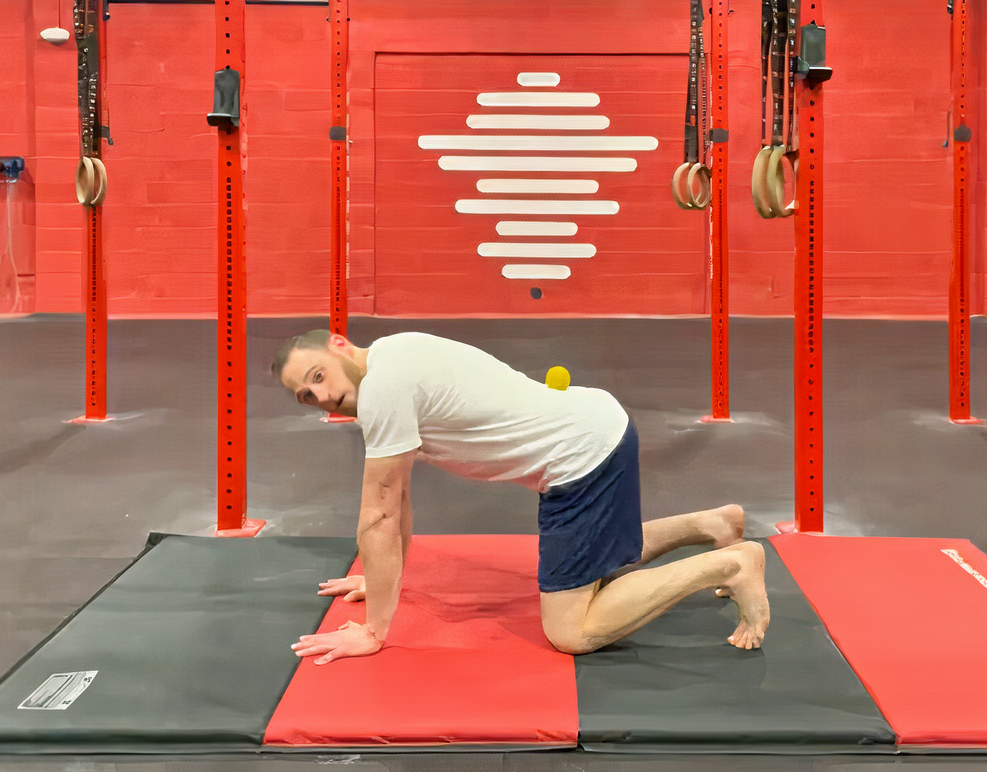
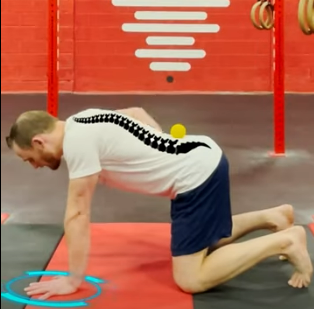
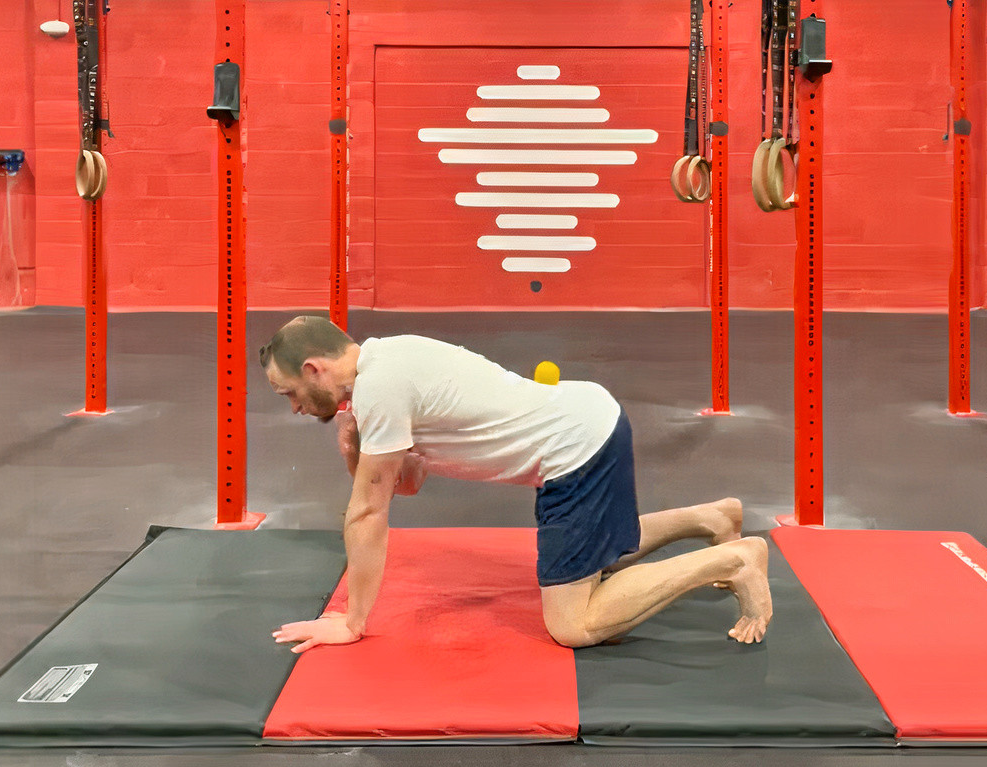
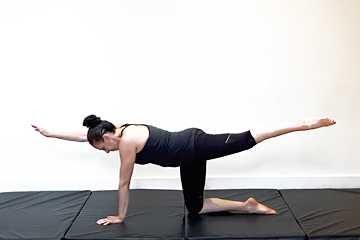
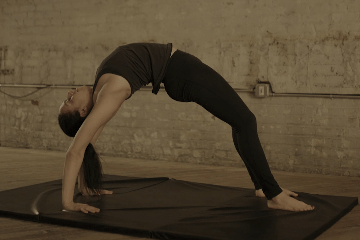
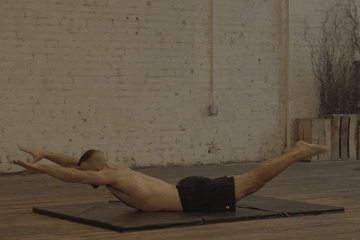
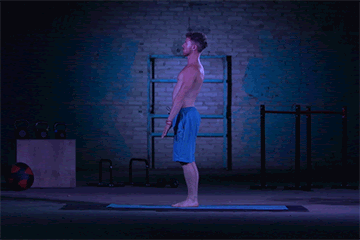
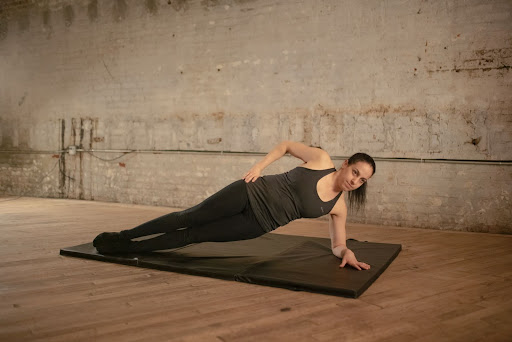


0 Comments